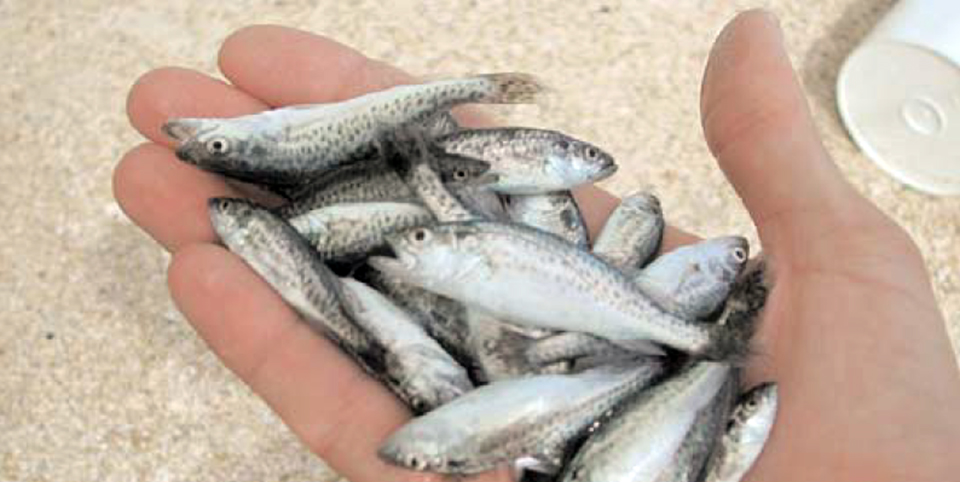University of Miami attempts to determine the benefits of probiotics with tropical marine fish species

Recent hatchery progress with tropical marine fish has raised interest in the feasibility of establishing commercial grow-out operations to supply a strong market demand. However, the availability of sufficient hatchery-produced fingerlings remains the main problem hampering commercial aquaculture development of many high-value tropical marine fish species in the Americas and the Caribbean. The main reason is difficulties in culturing the early life stages, especially for species exhibiting high metabolism and fast rates of development and growth. Research addressing hatchery technology is the first and most crucial stage for industry development. Innovation and technology are needed to meet this challenge.
Diseases still a problem
Efforts to produce mass quantities of high-value tropical marine fish fingerlings in hatcheries are still undermined by disease outbreaks during early developmental stages of larvae. In temperate regions (e.g. Asia, Europe, Australia), where marine fish aquaculture is a well-developed and profitable industry, hatchery diseases are mainly controlled using vaccines and anti-microbial compounds (antibiotics).
Chemotherapeutants
Although chemotherapeutants are an effective means of decreasing larval fish mortality, their use is not encouraged because of the risk of developing antibiotic-resistant bacteria strains, the chemical impact on the environment, and the potential of drug residuals in fish muscle tissues. Besides, very few of these substances have been approved for use in aquaculture in most countries, even though they have been widely used as growth promoters and as both prophylactic and curative treatments in the poultry and cattle industries.
Vibrio
In tropical aquaculture, prevention and control of outbreaks of pathogenic bacteria, mainly Vibrio spp., will require innovative and aggressive techniques. A recent study showed that Gram-negative heterotrophic bacteria, primarily Vibrio alginolyticus, which is highly pathogenic for marine fish larvae, constituted 100 percent of the bacterial community isolated on TCBS medium in a commercial hatchery without sterile conditions. There are numerous reports showing that epizootics of Vibrio alginolyticus have repeatedly occurred during the early developmental stages in marine fish hatcheries. The challenge is to suppress these outbreaks, allowing the sustainable mass production of several species of high-value marine finfish fingerlings in the Americas.
Probiotics
The use of probiotics in agriculture and aquaculture, particularly in the form of Gram-positive bacteria such as Bacillus spp., as an alternative to antibiotics for disease control is not a new concept. Probiotics have been widely used by the hatcheries throughout the world. Indeed, there is strong evidence that probiotics improve results in crustacean, mollusk and fish hatcheries. However, evidence that the use of probiotics is beneficial to survival of high-value tropical species of marine fish remains largely anecdotal.
Current research
Attempts to determine the benefits of using probiotics in the larval rearing of tropical marine fish species are currently being conducted at the Aquaculture Program, University of Miami (Miami, Florida, USA). Our hypothesis is that probiotics containing Gram-positive bacteria such as Lactobacilluss spp. and Bacillus spp. can be used to control pathogenic Vibrio spp. in larval fish rearing tanks.
Preliminary trials
Preliminary larval rearing trials with spotted sea trout (Cynoscion nebulosus), a marine sciaenid, showed that post-metamorphic larvae stocked in tanks inoculated with Epicin, a commercialy available probiotic, had faster rates of growth and development. The larvae had survival rates through metamorphosis twice as high as the controls. (Results are in preparation for publication. References are available from the authors).
Conclusion
Scientific and anecdotal evidence suggests a proactive probiotic regiment that prevents disease outbreaks from occurring can be more effective than a reactive regime using anti-microbial substances, aimed to cure and control disease outbreaks after they occur. Continuing comparative studies using both methods will determine the protocols to be implemented by commercial hatcheries in the future.
(Editor’s Note: This article was originally published in the October 2001 print edition of the Global Aquaculture Advocate.)
Now that you've finished reading the article ...
… we hope you’ll consider supporting our mission to document the evolution of the global aquaculture industry and share our vast network of contributors’ expansive knowledge every week.
By becoming a Global Seafood Alliance member, you’re ensuring that all of the pre-competitive work we do through member benefits, resources and events can continue. Individual membership costs just $50 a year. GSA individual and corporate members receive complimentary access to a series of GOAL virtual events beginning in April. Join now.
Not a GSA member? Join us.
Authors
-

Daniel D. Benetti, Ph.D.
Assistant Professor
University of Miami
MAF Division, RSMAS
4600 Rickenbacker Causeway
Miami, Florida 33149 USA[117,100,101,46,105,109,97,105,109,46,115,97,109,115,114,64,105,116,116,101,110,101,98,100]
-
Federico J. Rotman
Assistant Professor
University of Miami
MAF Division, RSMAS
4600 Rickenbacker Causeway
Miami, Florida 33149 USA -
Erik DeMicco
Assistant Professor
University of Miami
MAF Division, RSMAS
4600 Rickenbacker Causeway
Miami, Florida 33149 USA
Related Posts

Health & Welfare
Artemia bioencapsulation delivers probiotics via digestive tracts of fish larvae
Research with sturgeon and carp species indicated that encapsulated artemia has high potential to carry probiotics or other beneficial microorganisms.

Health & Welfare
Assessment of supplemental Bacillus probiotics in whiteleg shrimp juveniles
Results of a feeding study supplementing probiotics in the diet showed that when the Bacillus species were complemented in an appropriate concentration into feeds, the growth and feed efficiency of whiteleg shrimp could be improved.

Health & Welfare
Bacillus probiotics benefit tilapia rearing under challenging conditions in Brazil
A recent study that evaluated the benefits of using probiotics with a balanced mixture of Bacillus bacteria strains to inhibit pathogenic bacteria in tilapia.

Health & Welfare
Bacillus probiotics improve hatchery, nursery production in EMS-hit Mexico
In early 2014, a trial to evaluate the effects of a mixture of Bacillus strains on early mortality syndrome bacteria during the larviculture and nursery phases for shrimp was carried out at a commercial hatchery in Mexico.


